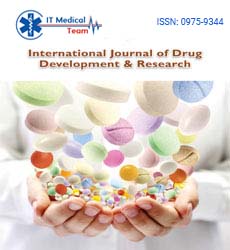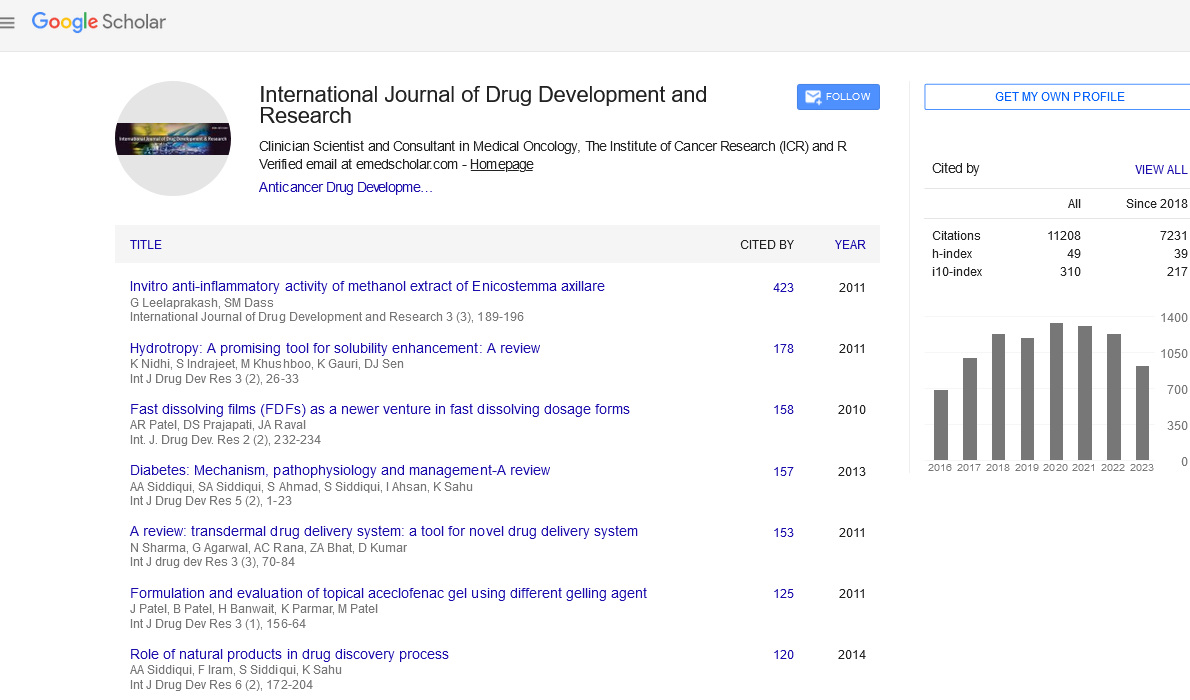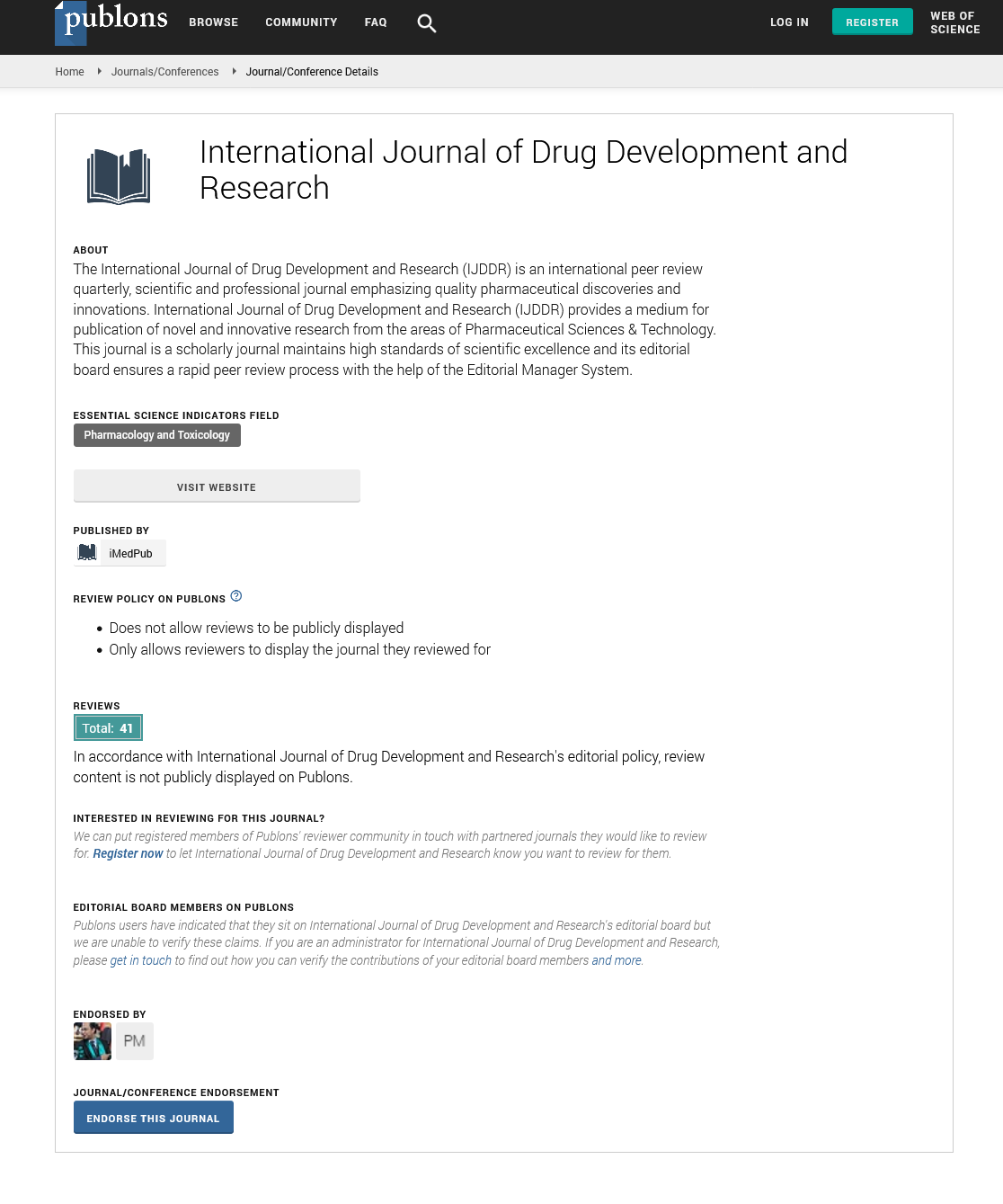INTRODUCTION
|
| |
| Diabetes mellitus, a chronic metabolic disorder, has now become an epidemic, with a world wide incidence of 5% in general population. The number of people suffering from diabetes has soared to 246 million and the disease now kills more people than AIDS1. The modern system of medicine still lack in providing suitable medicament for diabetes mellitus, in spite of tremendous advances made in discovery of new compounds. In recent findings extracts of various plant materials capable of decreasing blood sugar have been tested in experimental animal models and their effects are conformed and natural plant drugs are frequently considered to be less toxic and more side effects than synthetic ones.2,3,4 Citrus maxima Linn fruits are extremely important for their fruits, which is eaten fresh or processed form in numerous ways and which was used by Traditional healers for treating various ailments like ulcers, rheumatism, cancer, diabetes, heart disease and convulsive cough.5,6,7,8. |
| |
| Major isolates of these plants are Alkaloids and flavanoids includes Naringin, Poncirin, Grandisinine, Baiyumin and Honyumine.9,10,11,12,13 As a part of continuing studies with plants having antidiabetic activity we investigated this plant for its phytochemical and antidiabetic profiles. |
| |
MATERIALS AND METHODS
|
| |
|
Plant material
|
| |
| In the present study, the fresh fruits of Citrus maxima Linn were collected from Khanapur of Belgaum district, and authenticated by Prof. J S Kawalekar, R.L.S Institute, Belgaum. An authenticated herbarium is been preserved in the Department of Pharmacognosy and Phytochemistry, K.L.E.S’s College of Pharmacy, Belgaum. Preparation of Extracts |
| |
| Shade dried powder of fruits of Citrus maxima were subjected to exhaustive extraction by Soxhlet apparatus, successively with petroleum ether (400–600), chloroform, ethylacetate, alcohol. The extracts were filtered and concentrated at room temperature to avoid the decomposition of the natural metabolites. Fresh juice was also dried and used to treat one group of animals. The dried extracts were stored carefully for preliminary phytochemical investigation and for animal study. Preliminary Phytochemical Screening. |
| |
| Preliminary phytochemical screening of extracts revealed that sterols and lipids were present in petroleum ether extract. Sterols and lipids were present in chloroform extract. Flavanoids, oils and lipids in ethylacetate extract. Triterpenoids, flavanoids lipids in alcoholic extracts. Carbohydrates, proteins, aminoacids, and phenolic compounds were present in the aqueous extract. Animals |
| |
| Albino rats of both the sex weighing 150- 200 g were used in the experimental study (CPCSEA Reg No. 221). They were maintained at standard laboratory conditions like temperature, relative humidity and dark/light cycle, they were fed with standard diet (Hindustan Liver India) and water ad libitum. |
| |
|
Induction of diabetes
|
| |
| Diabetes was induced in rats by intraperitoneal administration of Alloxan monohydrate (150 mg/kg b. w,) in normal saline. After 72 hrs, rats with hyperglycemia (more than 150 mg/dl) were selected and used for anti-diabetic evaluation. Blood glucose was measured by glucometer (optium exceed,abott). |
| |
|
Acute Oral Toxicity
|
| |
| Acute toxicity study was carried out according to the OECD/OCDE, OECD Revised draft guidelines 423 14. Lethal dose of mice was calculated. |
| |
|
Evaluation of antidiabetic activity
|
| |
| The rats were divided into 8 groups, each group consisted six rats. The extracts of Citrus maxima fruits, suspended in tween 80 were administered orally by gastric intubations, after an over night fast. Normal control untreated rats (Group 1), diabetic control untreated rats (Group 2) were fed with only distilled water, Group 3 – Group 7 were treated with various extracts orally at a dose of 200 mg/kg b. w. daily for seven days and Group 8 animals were treated with standard drug Glibenclamide 10 mg/kg b. w, orally. Blood samples were collected by tail vein puncturing for measurement of blood glucose level for 1st day and at 7th day.15,16 (for prolonged treatment) |
| |
|
Statistical Analysis
|
| |
| The data was analyzed by one way ANOVA followed by Dunnet’s tests17 at a level of significance P < 0.001. |
| |
RESULT AND DISCUSSION
|
| |
| As per the preliminary phytochemical screening major phytoconstituents like sterols were present in petroleum ether (40° – 60°) and in chloroform extract, flavanoids in ethyl acetate and alcoholic extract, but carbohydrates, proteins, aminoacids and phenolic compound were present only in aqueous extracts. |
| |
| As per Acute toxicity study, Lethal dose of mice was calculated and was found to be for pet ether extract 200mg/kg b.w and for other extracts it was 500 mg/kg b.w, 1/10th of this lethal dose was taken at effective dose for subsequent studies. |
| |
| As per the results obtained from Alloxan induced diabetic rats, Ethyl Acetate, Alcoholic and Dried Juice extracts showed highly significant (p<0.001) Antidiabetic activity (155.8?3.049, 162.0?6.555 and 204.8?5.764 respectively) in acute study as compared to Diabetic control (399.0?5.007). Also the Aqueous extract showed moderately significant activity (p<0.005). But none of them showed significant results for prolonged study. The results were comparable with reference standard Glibenclamide (102.3?3.051). Petroleum ether extract and chloroform extract did not show any Antidiabetic activity at (399.2±7.569 and 396.0±7.806 respectively) as compared to diabetic Control in acute study. |
| |
| The single dose of Ethyl Acetate and Alcoholic extracts have highly significant (P<0.01) reduction of the blood sugar level at 5th hr and maintained low glucose level up till the end of 24 hour. The reference standard Glibenclamide also reduced blood glucose level at 3rd hr itself and maintained lower glucose levels for another 24 hrs. |
| |
| This shows that the Ethyl Acetate and Alcoholic extracts and Dried Juice have significant Antidiabetic potential for short period. The results of various extracts, control and standard are shown in table no.1 and 2, and Graphical representation is shown in figure 1 and 2. As per the effect of biochemical parameters, Total cholesterol and Triglyceride level were found to be significantly increased in diabetic control group in comparison with normal control. Treatment with Ethyl Acetate and Alcohol extract for a week drastically reduced the elevated total cholesterol, and triglyceride levels in comparison with diabetic controls. The Aqueous extract although reduced TG level as compared to diabetic control but didn’t show significant activity. This effect may be attributed to Naringin, a flavonoid, which is proved to have Hypercholestolemic effect. |
| |
| Alkaline Phosphate, SGOT and SGPT increase significantly in diabetic rats as comparison with non-diabetic rats, which indicates altered liver function in diabetic condition. Ethyl acetate and alcohol extract showed moderately significant effect in SGPT, SGOT and ALP (P<0.01). |
| |
| Ethyl Acetate and Alcohol extracts showed moderately significant decrease in Urea level (P<0.01) when compared with diabetic control and Dried Juice showed insignificant effect although it decreases urea level when compared with diabetic control. The summaries of biochemical parameters in diabetic and non-diabetic rats are shown in table no 3 and figure3. |
| |
Conflict of Interest
|
| |
| NONE |
| |
Source of Support
|
| |
| NIL |
| |
Tables at a glance
|
|
|
| |
Figures at a glance
|
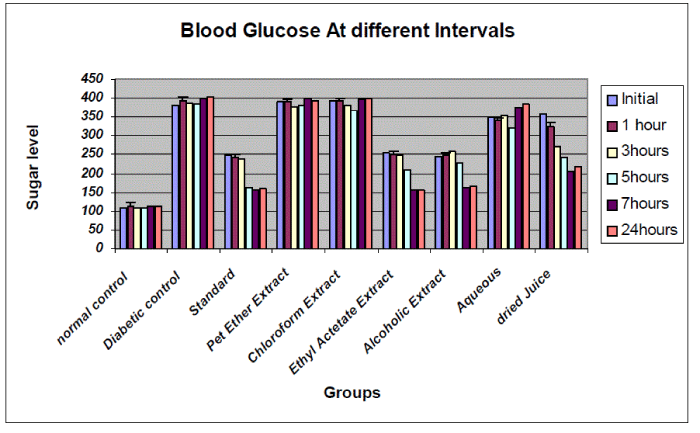 |
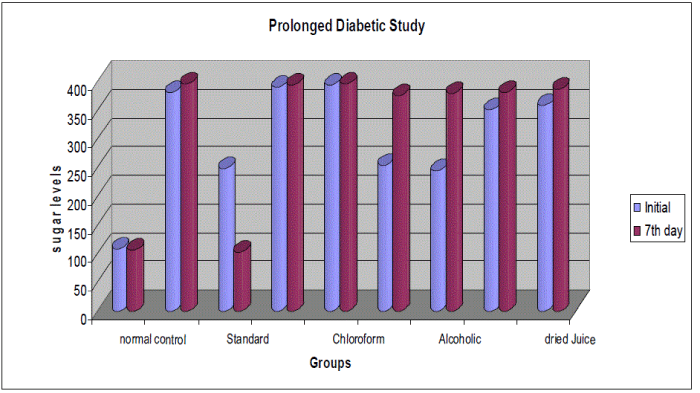 |
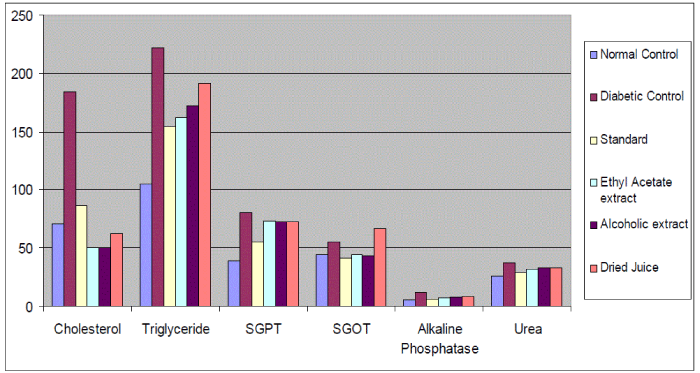 |
| Figure 1 |
Figure 2 |
Figure 3 |
|
| |
